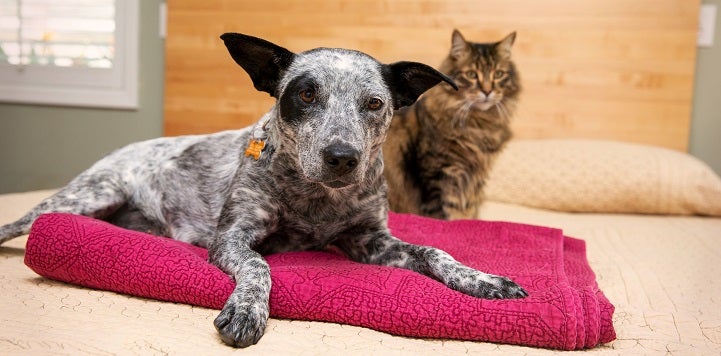
No-Kill Shelter Positive Outcome Study 2017-2018
The goal of the Best Friends No-Kill Positive Outcome Study is to determine national-level benchmarks for positive outcome types in order to establish goals for increased lifesaving. The shelter data included in the study was limited to 2017–18 collected data from no-kill, brick-and-mortar* sheltering facilities with intakes higher than zero, totaling 1,844 organizations in the sample size.
*The exception is foster-based rescue groups that are contracted as municipal sheltering organizations (i.e., rescue groups with a government
contract).
DATA INSIGHTS
- Adoption is the leading outcome type for all no-kill shelters, accounting for 65.7% of all outcomes.
- This is followed by return to owner at 11.5% of outcomes.
- Combined, these two percentages make up 77.2% of outcomes, yielding local community-based placement as a key element to lifesaving.
- No-kill shelters make up 57% of all shelters with data and 37% of all shelters total.
- There are more no-kill government-run animal shelters than any other no-kill organization type.
- There is a total of 1,181 no-kill municipal organizations (Government Animal Services plus contracted) representing almost 64% of all no-kill shelters.
- Great Plains is the region with the highest quantity and percentage of no-kill shelters.
- The South Central, Pacific and Southeast regions have the lowest percentages of no-kill shelters, which is consistent with our findings on shelter killing in their target states.
- We are missing data for 43% of South Central shelters, which could lead to an increase in no-kill percentage.
COMBINED SPECIES BENCHMARKS
SAMPLE SIZE COMPOSITION
REGIONAL COMPOSITION
The No-Kill Shelter Positive Outcome Study is an analysis of data included in Best Friends data set. This data set is continually growing, changing and being updated. We intend to publish updated versions of research as frequently as possible, but this study was based on 2017 and 2018 shelter data.
If you are unsure if your shelter is contributing to the Best Friends data warehouse, you can submit your data here.
Download the Positive Outcomes Study 2017-2018
You can find our updated version of this study which includes 2019 data, as well as 2017 and 2018 data, for 2,114 no-kill shelters here.
Andie Peart
Senior Analyst of Network Operations
Best Friends Network